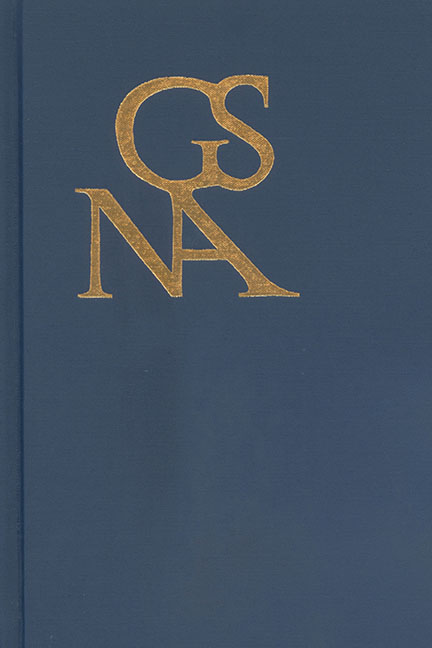“Sie Hat Den Gegenstand”: Rahel Levin Varnhagen’s Subliminal Dialogue with Goethe
Published online by Cambridge University Press: 28 October 2020
Summary
IN HER ESSAY “Rahel und Goethe” (Rahel and Goethe), Käte Hamburger (1896–1992) observes that “Rahels Gespräche, damals weit über Berlin hinaus berichtet, sind verklungen. Aber sie klingen nach und wieder auf in einem Briefwechsel” (113; Rahel's conversations, at that time talked about all over Berlin and beyond, faded away. But they resound time and again in an exchange of letters). In her response to Rahel Levin Varnhagen (1771– 1833), Hamburger not only reacts to her writings, emphasizing the letter form as a supplement and extension of salon conversations, but also highlights the continuation of the dialogue that Levin Varnhagen had begun. The dialogue continues through time and space, as more authors and literary critics engage with this topic, thus keeping it alive and conforming to Levin Varnhagen's aspiration: “Dann ist und bleibt eine Korrespondenz lebendig” (Then the correspondence is and remains alive). Levin Varnhagen's lifelong correspondence project celebrates the connectedness and bringing people together according to Romantic symphilosophy, the optimal condition for literary and artistic creation. This article, based primarily on my interpretation of selected materials from the Varnhagen Archive concerning Levin Varnhagen's reception history, examines her dialogues about and with Goethe while shedding more light on her cultural and literary legacy in the context of her identity as a woman and a Jew. With her epistolary writing, Levin Varnhagen contributed to philosophical and cultural engagement through the creation of a network of people corresponding with each other and generating knowledge dependent on dialogue. In this article, I examine two forms of dialogue as they pertain to Goethe's role in Levin Varnhagen's life: Levin Varnhagen's “dialogue within the dialogue”4 about Goethe, and what I call her “subliminal” dialogue with Goethe. Specifically, Levin Varnhagen's interaction with Goethe and his work warrants reexamination of her emerging identity as a literary critic and a creator of diverse forms of dialogue. To make this point, I first revisit the immediate reception of Levin Varnhagen as a public persona and her place in society as a woman, a Jew, and a writer and the struggle with the genderrole division as it pertains to the aspiration of being published. I continue with the Romantic idea of sociability and dialogue and then discuss Levin Varnhagen's innovative communicative network.
- Type
- Chapter
- Information
- Goethe Yearbook 27 , pp. 101 - 118Publisher: Boydell & BrewerPrint publication year: 2020



